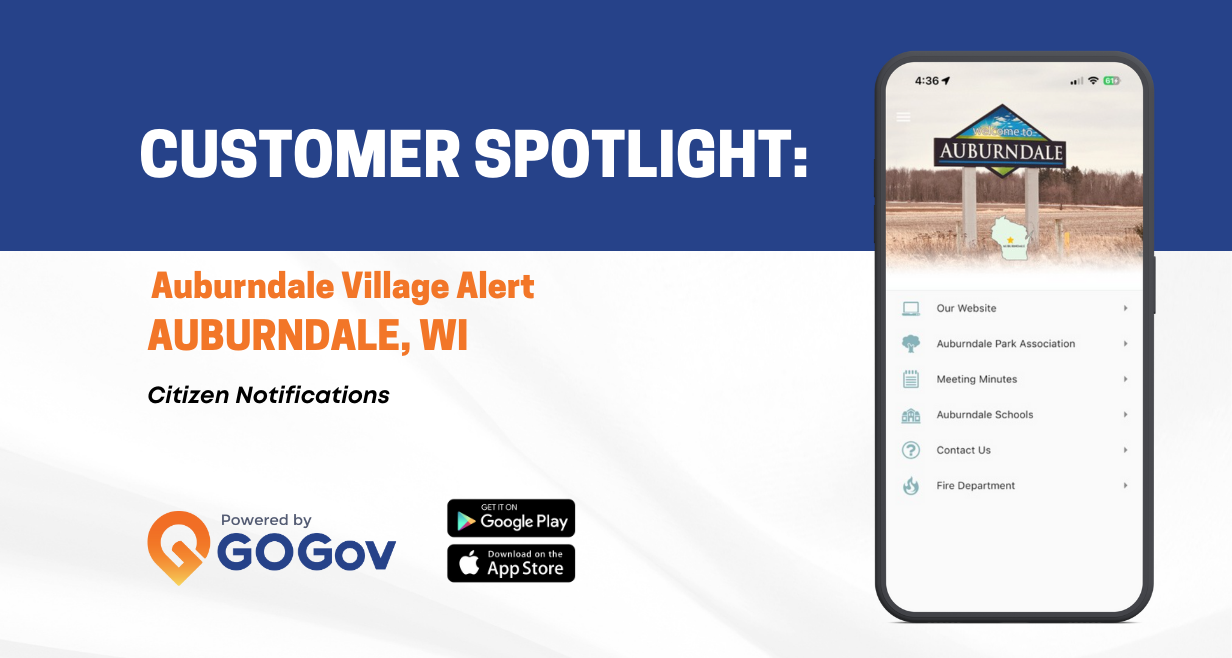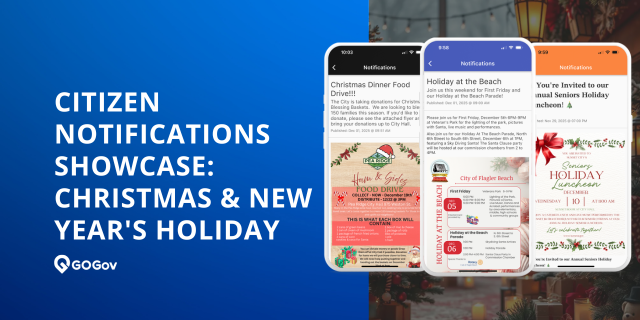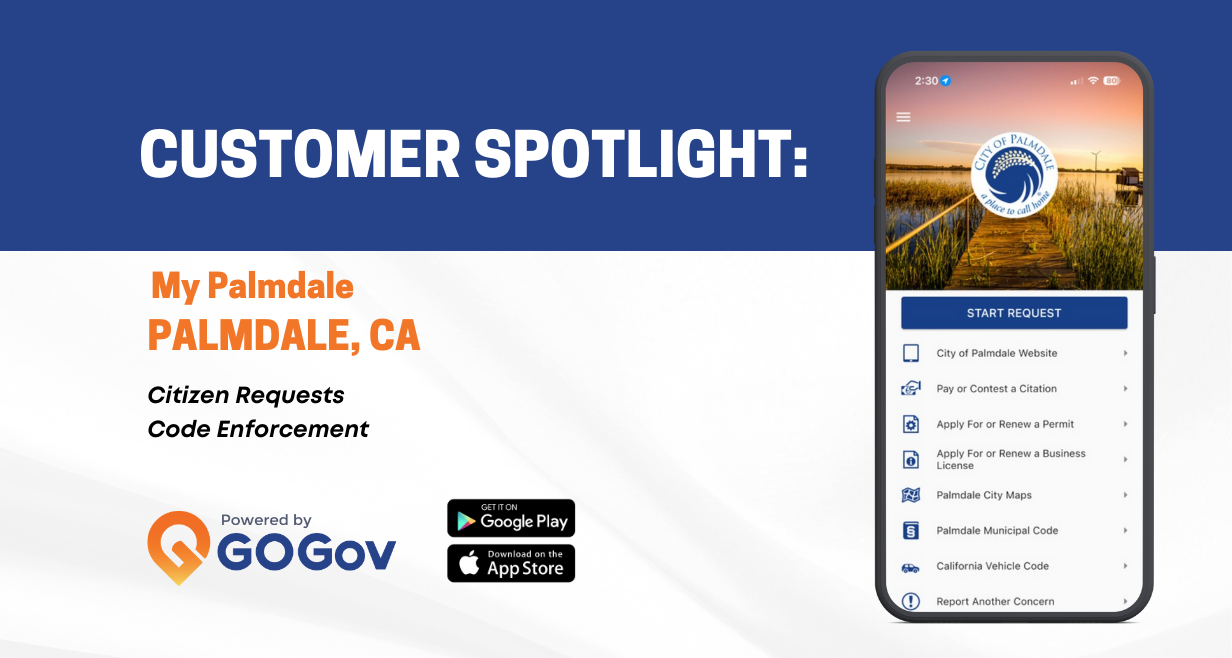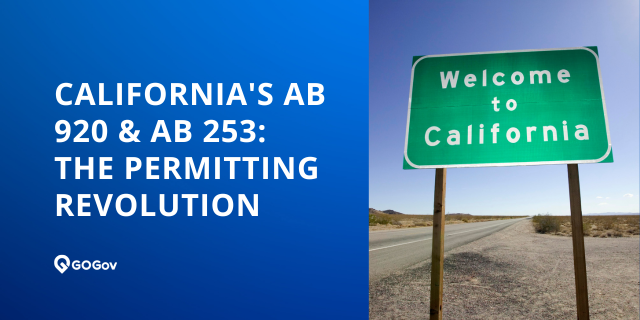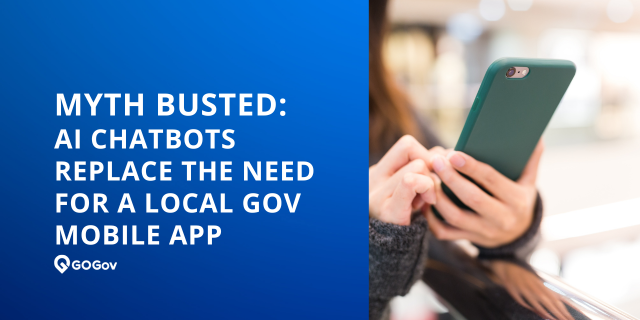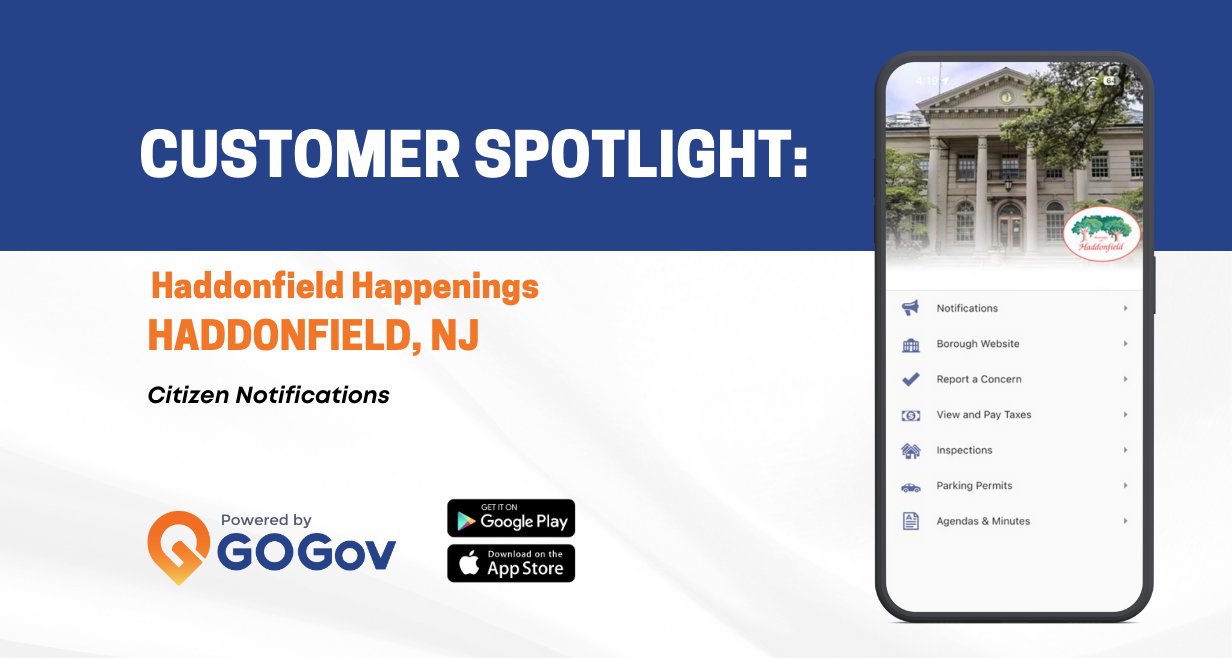Departments

Administrative


IT


Building


PIO


Clerks


Police & Fire

Code Enforcement


Public Works


Elected Officials


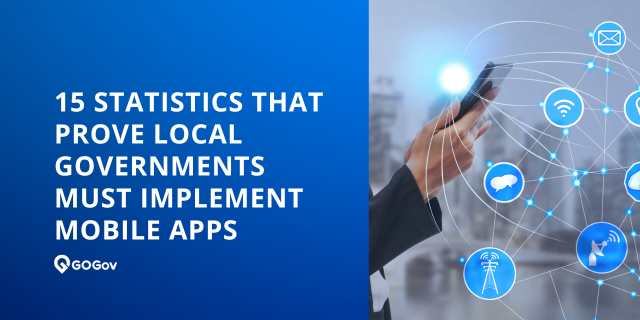
You don't have to choose between traditional government communication methods and modern digital engagement. You can leverage mobile apps to create a powerful platform that increases citizen satisfaction, streamlines operations, and transforms how local governments serve their communities.
Statistics show that mobile apps for local governments supercharge results across every metric that matters. Keep reading to discover the research on how mobile technology makes government services more effective, accessible, and efficient.
For the past decade, citizens have increasingly expected digital-first experiences in every aspect of their lives. Government services have been slower to adapt, but forward-thinking municipalities are discovering that mobile apps aren't just nice-to-have—they're essential for meeting citizen expectations and improving operational efficiency.
Local governments that have embraced mobile apps are seeing remarkable results. Cities that implement mobile apps for citizen engagement experience a 72% increase in overall satisfaction among residents according to the National League of Cities. These aren't just incremental improvements—they're transformational changes that affect every aspect of government operations.
But mobile apps for government go beyond simple communication. They enable real-time service delivery, streamline administrative processes, and create new channels for civic engagement. Local governments that have adopted mobile apps for citizen requests and alerts have reported a 25% reduction in response times, demonstrating the efficiency these platforms bring to public services.
We've compiled compelling statistics that show why mobile apps are no longer optional for local governments—they're a necessity for effective modern governance.
Citizens Demand Mobile-First Government Services
The foundation for mobile government apps is simple: that's where the citizens are. The numbers are overwhelming:
- 95% of Americans own a mobile phone of some kind, making it the most common communication device across all demographics. (Pew Research)
- 20% of Americans rely solely on smartphones for internet access, eschewing traditional computers entirely. (Pew Research Center)
- 70% of citizens would prefer to interact with local governments through mobile apps, highlighting the strong preference for this channel. (Deloitte)
- 80% of residents prefer using mobile apps to access government services and information according to research from the National League of Cities.
- 84% of citizens expressed their desire for real-time alerts and notifications from local governments, showing the need for timely information during emergencies or public events. (Accenture)
These statistics reveal a clear mandate: citizens not only want mobile local government apps, they expect them.
Local Government Mobile Apps Dramatically Improve Government Efficiency
The operational benefits of local government mobile apps extend far beyond citizen satisfaction:
- 32% reduction in administrative costs thanks to streamlined communication and reduced paperwork. (National League of Cities)
- 67% of citizen requests are handled electronically through mobile apps, saving time and resources. (GovTech Magazine)
- 75% increase in staff efficiency for local governments that have adopted mobile apps for internal communication and task management. (GOGov Internal Study)
- 40% increase in resolution efficiency and a 50% decrease in response times for municipalities using mobile apps for service requests. (GovTech Survey)
- Mobile app notifications can be sent at a fraction of the cost of SMS messages, providing crucial cost efficiency for budget-conscious local governments. (Localytics)
Engagement Spans All Demographics
One of the most compelling aspects of local government mobile apps is their ability to reach citizens across all age groups:
- 88% of millennials (ages 18-34) own smartphones, making mobile apps the ideal way to engage with this tech-savvy generation. (Pew Research)
- 60% of seniors (ages 65+) use mobile apps, showcasing the potential for mobile apps to reach even older segments of the population. (AARP)
- 90% open rate for push notifications from mobile apps, significantly higher than the 20-30% open rate typically seen with SMS communications. (eMarketer)
- 87% of mobile device time is spent within apps, underscoring the preference for app-centric engagement over other digital channels. (Apptentive)
Mobile-First Government is a Global Trend
Local governments worldwide are recognizing the importance of mobile services:
- 70% of UN member states provide their citizens with mobile health services according to a 2022 survey. (United Nations)
- 66% used mobile apps or SMS to provide public information updates regarding education, while 53% used mobile services for environment-related topics. (United Nations)
The Technology Infrastructure is Ready
The technical foundation for mobile government apps has never been stronger:
- Over 2.87 million apps are available on Google Play Store and 1.96 million on Apple App Store as of 2025. (Business of Apps)
- Mobile apps generated over $935 billion in revenue in 2024, highlighting the industry's maturity and reliability. (Statista)
- 5G networks are now available in over 75 countries, enhancing capabilities for high-definition streaming and real-time government services. (Industry Reports)
These statistics paint a clear picture: mobile apps for local government aren't just a trend—they're an essential tool for modern civic engagement. Citizens demand them, the technology is mature and reliable, and the operational benefits are proven.
The question isn't whether your local government should implement a mobile app—it's how quickly you can get started. The data shows that governments embracing mobile technology are seeing transformational improvements in citizen satisfaction, operational efficiency, and cost savings.
Ready to transform your local government's digital engagement? The statistics speak for themselves: local government mobile apps are no longer optional for effective governance. Contact GOGov to learn how we can help your municipality join the growing number of communities benefiting from mobile-first government services.
Sources: Pew Research Center, National League of Cities, Deloitte, Accenture, AARP, GovTech Magazine, eMarketer, Apptentive, United Nations, Localytics, Business of Apps, Statista









